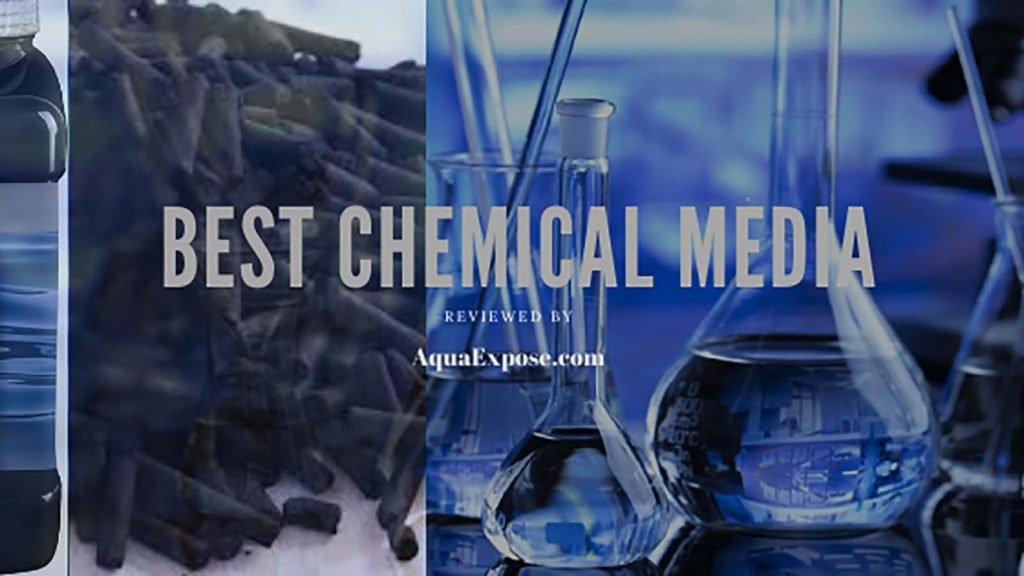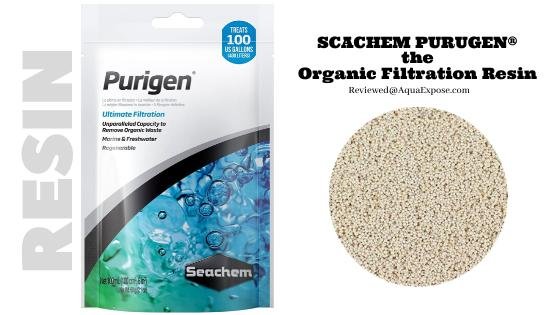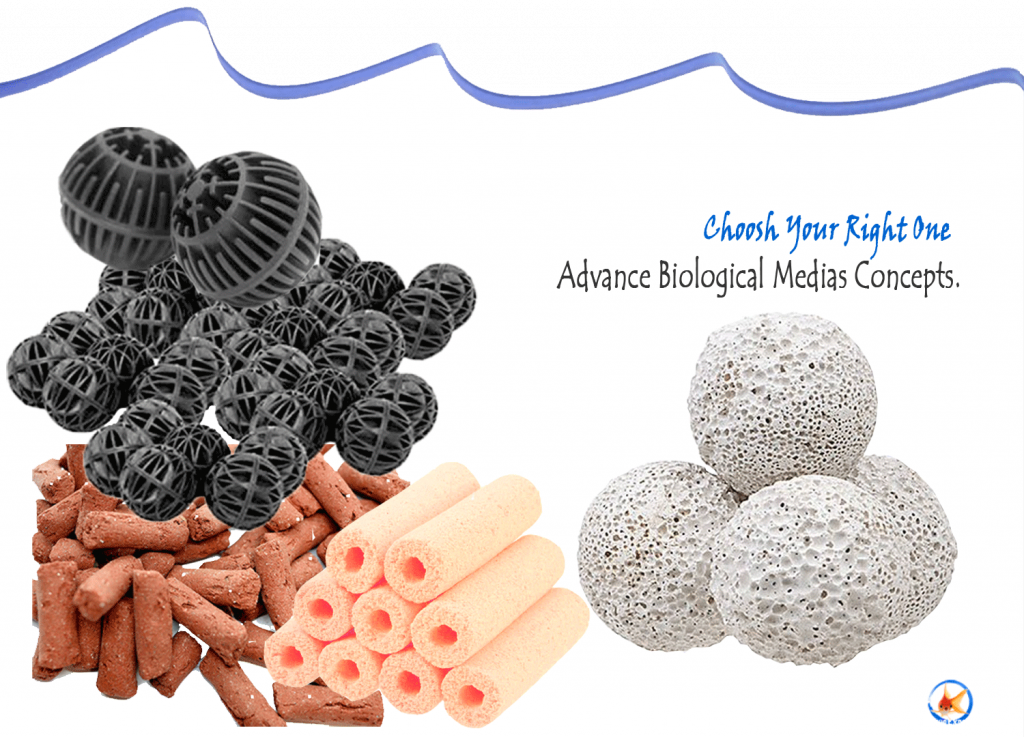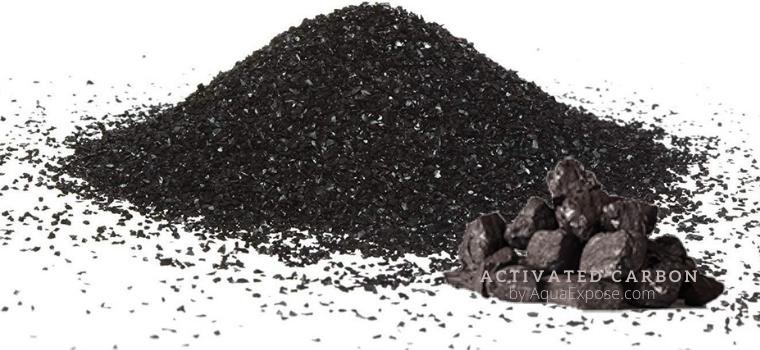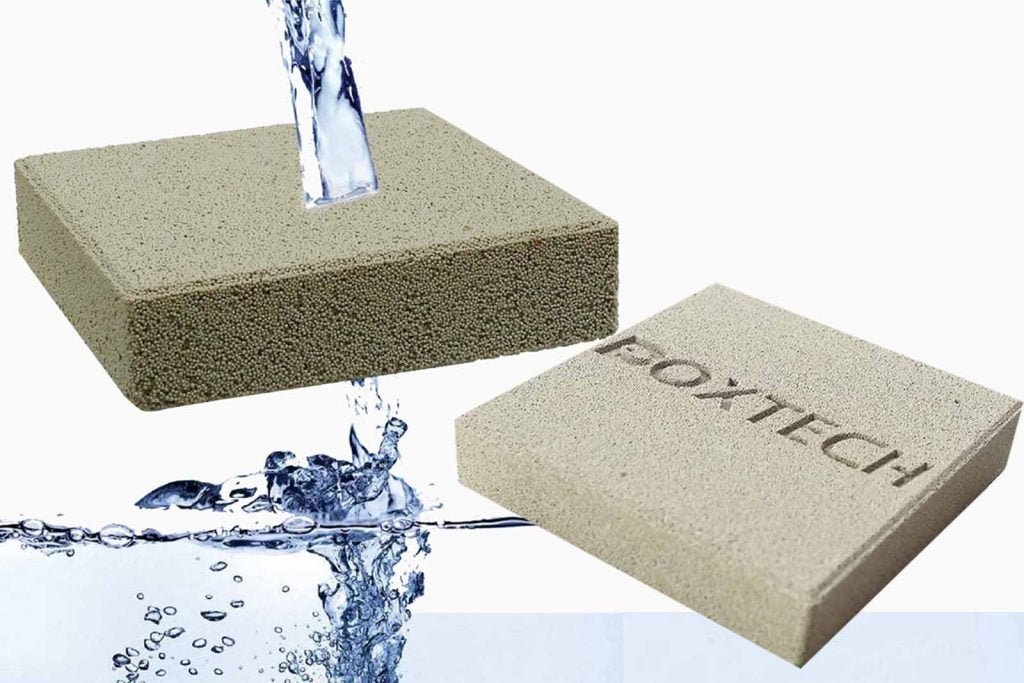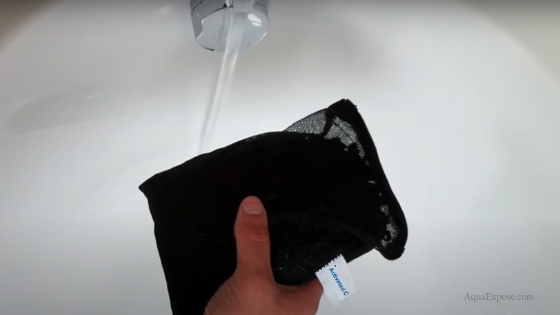6-Best Mechanical Filter Media For Aquarium [Overview & Reviews For The Most Common Type of Filter Media]
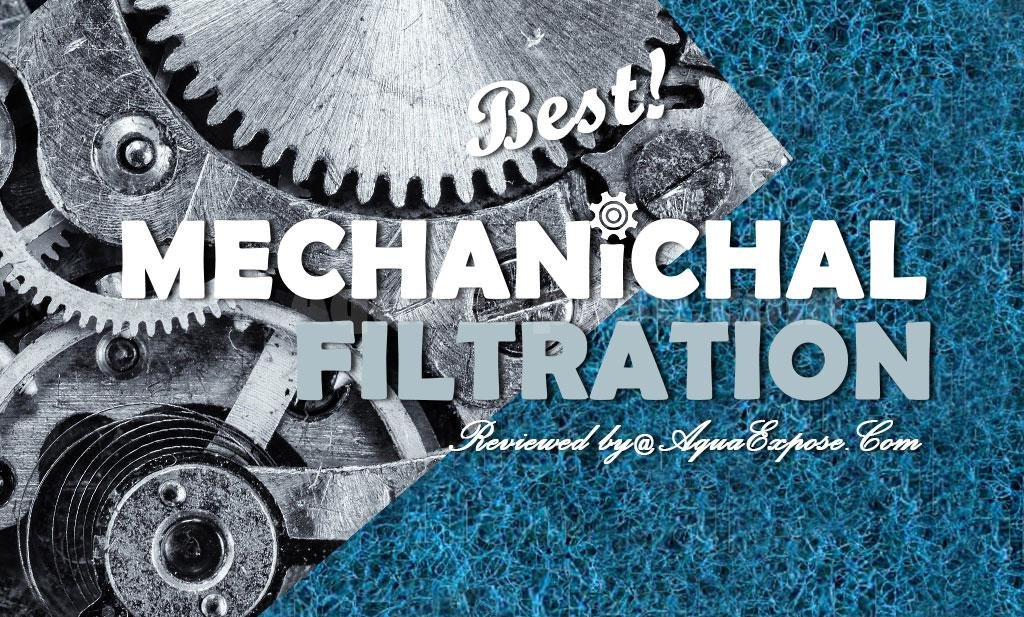
| The Best Mechanical Filter Media- The Complete Guideline |
When choosing a mechanical filter media, think about what you need it to do. Some media are designed to trap small particles while others are meant to help circulate water and improve circulation. Some media can be used in both freshwater and saltwater tanks while others are only effective in one type of water. It is important to research which type of mechanical filter media is best for your specific needs before making a purchase.
Fishkeeping is a well-known hobby all around the world. I’m sure you have seen beautiful aquariums with colorful fishes in many houses. Many people like to keep one to increase the ecological aesthetics of their home environment. However, you have to take care of it to maintain a healthy aquatic environment inside the aquarium.
There are many important aspects while you are taking care of an aquarium. One of them is proper filtration. Filters are an absolute necessity for an aquarium’s longevity. And mechanical filters are the most common types among all. If you are a newbie aquarist, you may ask what is this mechanical filtration, and what is the importance of this?
Well, as I said earlier, this is the perfect place to learn all your answers at once!
Our recommended Mechanical Filter Medias For Aquarium:
“If you do not have enough time to go through the whole review, we would suggest you go for which is very affordable, durable, and comes with a lot of good reviews and feedback from the buyers”
 | Seachem Purigen | Brand: Seachem Item Form: Powder Target Species: Fish | Check Price |
 | Aquaclear Foam Inserts | Manufacturer: Rolf C. Hagen (USA) Corp Filter compatibility: Compatible with AquaClear 70 Power Filter. | Check Price |
6- Best Mechanical Filter Media You Can buy For Your Aquarium
There are several brands out there that manufacture different types of mechanical filter media worldwide. Choosing one from them is a bit hard to do if you are a beginner aquarist. We have made a list of the 5 best mechanical filter media to make your search easier.
And if you want to know which we recommend the most among these 5, Aquaclear Foam Inserts is the first choice for us. It is affordable, very easy to install along with a long time of performance.
Now, let’s have a look at the details of these 5 products now.
(1) Seachem Purigen Organic Filtration Resin

- Type of Filtration: Mechanical
- Material: Synthetic Polymer
- Filter Style: HOB/ Canister/ Box/Any Media Chamber
Seachem Purigen Organic Filtration Resin is a unique filtration product. It’s a synthetic absorbent that keeps the water free from harmful chemicals. This resin not only maintains water’s chemical balance but also increases the clarity of water too.
What Purigen basically does is suck in the dirt component of water. It darkens with time but can be easily washed and used again.
Features of Seachem Purigen Organic Filtration Resin:
Effective filtration:
Seachem Purigen is a macro-porous synthetic polymer. Its unique structure sucks in the elements that make the water unclear. And it does so very fast. After 24 hours of setting up the filter, you will find your tank water to be crystal clear.
Capacity:
This filter has microscopic pores. It increases the usable surface area multiple times. Thus it can hold a lot at once.
Reusable:
An already used Seachem Purigen can be used again through cleaning. If it’s exhausted it will turn black or dark brown. Cleaning it off with bleach and water solution will remove all the dirt it has captured. After that, you will be able to use it again.
Can be used for both marine and freshwater:
It doesn’t matter whether you have a marine or freshwater aquarium. Seachem Purigen is for both freshwater and saltwater aquarium. It will be equally effective in both cases.
To Read Our Complete Review on Seachem Purigen here.
What We Liked:
- Compact size
- Light-weighted
- Easy to use
- Renewable
- Quickly effective
- Cheap price
What We Didn’t Like:
- No warranty
- Needs to be cleaned every 4 months
- It smells bad
(2) Aquaclear Foam For Filter Inserts

- Type of Filtration: Mechanical
- Manufacturer : AquaClear
- Type of Media: Filter Pad
- Material: Foam
- Filter Style: HOB/ Power Filter
Aquaclear is a well-known name for producing quality products in regard to aquarium keeping. They have been creating several types of mechanical filtrations for a long time. In our best mechanical filter list, Aquaclear Foam Inserts undoubtedly has taken the first position for its economic value and the special feature it brings along.
Features of Aquaclear Foam Inserts:
Efficient:
This filter is efficient and very easy to use. You just have to cut it in size based on your preference and slide it along in the filter media. It entraps the debris and tiny particles with ease. No visible waste particles can cross through this mesh.
Durable:
This product is popular for its long-lasting life and consistent performance. With proper supervision like cleaning it every few weeks, it can keep it active for a long time.
Compact design:
This is the perfectly designed foam inserts for an AquaClear 70 filter. You can also use this foam insert for any fish tank between 40-70 gallons of water capacity.
Economic Package:
This package comes with a 3-pack set. The price is also very reasonable. You can buy a pack and can use it for a long period of time easily.
What We Liked:
- This product comes at a reasonable price.
- You can use it and clean it with ease.
- It fits the Aquaclear 70 filter tank perfectly.
- It comes in an economy package containing 3 packs.
- Long-lasting life with stable performance.
What We Didn’t Like:
- Some may find it too coarse than necessary.
- Needs more maintenance sometimes.
(3) Aquarium Filter Pad – FilterFirst Aquarium Filter Media Roll (Dual Density)

- Type of Filtration: Mechanical
- Manufacturer : Aquatic Experts
- Type of Media: Filter Floss (Coarse Fine Dual Density)
- Material: Durable Polyester Fibers
- Filter Style: Wet/dry filters, sumps, canister filters, aquaponics system, and much more.
This FilterFirst aquarium filter pad has been one of the customer favorites for a long time. This product has some extraordinary features and can be used for a long time as well.
Features of Premium Dual Density Aquarium Filter:

High Quality:
This product is made with polyester fibers giving it a strong and durable life. It works relentlessly to remove debris and pollutants easily from the tank water.
Dual Density:
This product is made of two layers instead of one. Hence it functions as a coarse and a fine filter at the same time. You don’t have to put any extra layer on it.
Custom Fit:
This filter pad comes in rolls. So you can cut it as your fish tank filter needs it to be. Saving your money and effort as well. Perfect for freshwater and marine aquariums.
Better Water Quality:
With its crystal clear appearance, this filter pad also makes your water quality a lot better. Changing it regularly will keep all the trash materials away.
Eco Friendly:
This is made without using any dye. It is safe for fish and other aquatic living as well.
Manufacturer’s Video: How to use
What We Liked:
- You can cut the pad depending on the size of your aquarium filter needs.
- The polyester fiber materials make it a sturdy one.
- You can use it in both freshwater and saltwater tanks.
- This dual-layer pad works as fine and coarse filter media both.
- Increases the quality of the aquarium water.
What We Didn’t Like:
- It may decrease the rate of water flow at times.
- You have to change the filter pad on a regular basis.
(4) InTank Aquarium and Pond Filter Floss

- Type of Filtration: Mechanical
- Type of Media: Filter Floss Pad
- Material: Polyester Fibers
- Size: Each sheet is about 10″ x 20″ x 1-1.5″(Easily Cut).
- Description: Value Pack – Bonded Blue & White Poly Filter Floss Pads 600-square-inches
- Filter Style: Fits hundreds of filters for freshwater & saltwater And ponds.
This inTank Aquarium and Pond filter floss is one of the best mechanical filter media you can use in your aquarium. This high-quality sturdy product can be easily named the best filter floss available now in the market.
Features of Intank Aquarium And Pond Filter Floss:
High Quality:
This filter floss is built with synthetic polyester fiber, making it sturdy and long-lasting. It eradicates all the wastage and debris quite effortlessly.
Dual Density:
The dual-density layer helps it to work as a coarse and fine filter. You don’t have to use any other filter media with it.
Easy Fit:
This thick filter floss sheet can be cut as your aquarium filter need. You can change the floss or can reuse it by rinsing it. You can use it in both marine and freshwater tanks, ponds, etc.
Better Water Condition:
This eco-friendly product gives a clean and clear look to your tank water with a good water flow rate. This three-sheet pack can be used for a long time.
What We Liked:
- This big-size filter floss can be cut according to your tank filter size.
- The double-layer system catches all types of trash and waste.
- The artificial polyester fiber makes it very enduring.
- It is environmentally friendly.
- You can easily use it and replace it.
What We Didn’t Like:
- It may slow the water flow rate of the fish tank.
- This may need to be replaced after a few cleanse.
(5) Marineland Penguin Rite-Size Cartridge

- Type of Filtration: Mechanical and Chemical filtration
- Type of Media: Cartridge
- Material: Black Diamond Premium Activated Carbon
- Size: A, B, and C. ||for details||
- Description: BIO-Wheel technology delivers wet/dry biological filtration for nitrifying bacteria growth
- Filter Style: Pack of 6 fits Marineland Penguin PRO Power Filters 275 and 375; also fits original Penguin Power Filters 200 and 350.
If you want mechanical filtration media in the cartridge version, this Marineland Penguin Rite-Size Cartridge is the best option of all. This already-put-together product can be used instantly after you receive it.
Features of The MarineLand Cartridge:
High Quality:
This cartridge filter is made of dual-thick poly fiber materials, making it a strong and durable product. You can even use it to purify drinking water!
Swift Installation:
You can start to use it the moment it reaches your door. The installation process is easy and time-saving, this thing slides into its place within no time.
Double Functionality:
This cartridge filter has a dual-functional system of mechanical and chemical filtering. It chemically works through the activated carbon making it safer.
Bio-Wheel Technology:
It has a bio-wheel tech which also helps in biological filtering. As a result, the bacteria in the water can grow without any disturbance.
Easy Fit:
This sturdy cartridge media is suitable for Marineland Penguin PRO Filter models 275 & 375; along with the real Penguin Power Filter models 200 & 350.
Better Water Condition:
This mechanical filter removes all the toxins and debris from the water without any trouble.
What We Liked:
- Reasonable price.
- The installation process is trouble-free.
- Durable performance.
- Helps to develop nitrifying bacteria growth.
- Works as both mechanical and chemical filtration.
What We Didn’t Like:
- You need to clean the filter before changing the cartridge.
- It could get messy in the box.
(6) Aquaneat Reticulated Open Cell Foam Sponge

- Black: 11″x10.25″x2″ Black (Fine)
- Blue: 11″x10.25″x2″ Blue (Coarse)
- Green: 11″x10.25″x2″ Green (Medium)
Using a sponge to filter water may work better than you ever thought. That’s why in this best mechanical filtration media list, our last but not the least option is the Aquaneat Reticulated Sponge. This customizable product is undoubtedly one of the best sponge filters of all time.
Features of Aquaneat Foam Sponge:
High Quality:
This cell foam sponge with the reticulate built has a bigger internal surface place which promotes the biological growth of beneficial bacteria.
Better Water Flow Rate:
Using this sponge in your aquarium will increase the water flow rate with a minimized clogging amount.
Easy Fit:
Cut this sponge depending on your tank size. You can use it in any container, power filter, pond filter, aquarium, home-based DIY projects, etc.
High PPI:
It has a higher PPI than most, making it more accessible for expanded biological filtration. You should use it with a combination of different PPI to get the perfect outcome.
Better Water Condition:
This mechanical sponge filter removes all the pollutants and waste materials from the water. It gives the water a crystal-clear appearance as well.
What We Liked:
- Provides a better flow rate of water.
- It doesn’t get jammed easily.
- Can be used for purifying water
- Comparatively high pores per inch or PPI.
- You can cut it based on the filter size.
What We Didn’t Like:
- Some may find it harder to trim.
- It could get a bit smelly in the package.
Mechanical Filter Buying Guide:
-How To Choose The Best Mechanical Filters For Your Aquarium?
Hope you already gather knowledge on some best mechanical filter media by reading my above reviews. Now I am trying to make you a clear understanding of what is mechanical filtration and why you need it in your filter. Here I also described the importance of mechanical filters to your aquariums. In this buying guide, I will know about the detailed knowledge of the different types of mechanical filtration and which are the best. Hope overall you will get a clear idea to choose your best mechanical filter media. So, let’s start…
What Is Mechanical Filtration? Why Do You Need It In Your Filter?
Filtration is an important process for the proper maintenance of an aquarium. Over time your water tank tends to be contaminated with debris or many types of pollutants. To balance the aquatic environment, you must clean your tank after a certain amount of time. This will give the fish in the tank a better and healthy surrounding to live in.
Cleaning the aquarium is not like our regular cleaning process. You can’t just drain the tank of water and fill it with fresh new water. This is a place of living creatures, so you have to take care of it in an appropriate way. Hence the filtration process is the easiest and most convenient way to clean your fish tank from any dust particles and chemicals.
Generally, aquarium filtration can be of 3 types known as biological, chemical, and mechanical filtration. In biological filtration, living organisms are used to filter the fish tank water. In the chemical filtrations process, chemical compounds are used to clean the aquarium. However, mechanical filtrations are considered the real filtering process by most aquarists.
Mechanical Filtration
Think of a fishnet. When you use the net to catch fish, what happens? You can see that water can pass through the net easily, but any fish or hard items get stuck inside. Mechanical filtrations use this exact method to clean the tank water. The filter media of the filter holds the waste products or particles while going through the filter machine.

While the waste materials get stuck in the media, clear water streams back to the fish tank. Your mechanical filter will take out the fish waste, muck, plant parts, and dust particles that are hovering inside your aquarium. At first, you won’t notice these as they are relevantly less in amount and practically invisible to the naked eye.
Importance of Mechanical Filter
However, each time with a new addition the mess gets bigger and your aquarium water starts getting dark. Eventually masking the inside so that you won’t be able to see your fish anymore. To prevent such conditions, mechanical filtration is the wisest option from the very start. A freshwater fish tank must have a mechanical filter before setting it up for fish.
Like every other thing, you have to make sure your mechanical filter is working fine. And for that, proper look after is necessary. If you don’t take care of it in an appropriate way, the waste inside the filter will clog the filter and can contaminate the whole water. Or if the waste materials start to become rancid, the spoilt water can even kill the fish inside.
This is why you have to be very cautious about your tank’s mechanical filter. You must clean it on a regular basis. And if you feel it is not working anymore, you must replace it with a new one to restore the balance. Properly cleaning the filter media is also very important. In the mechanical media, some essential bacteria of the biological filtration process are also present.
If you use tap water or cleaning elements to clear the filter, you could also kill these beneficial bacteria. Resulting in a rise of nitrogen elements, which is detrimental to the fish’s lives.
What Are The Different Types Of Mechanical Filtration?
There are different types of mechanical filtration for fish tank maintenance. They are categorized based on the size of the holes in the filter.

These pores allow the water to pass within. Coarse filter media contains larger pores, whereas thinner filter media has smaller pores. So the particles that can pass through the coarse one, would get stuck in the fine one.
Fine Mechanical Filter
Superfine mechanical filtrations are also called ‘polishers’ by some. Because they can trap the tiniest dust particles from your fish tank, making the water a crystal-clear look. So, you might think using a finer filter media will be better than a coarse one. But if you think thoroughly, you will know which one is actually better!
Coarse Mechanical Filter
A coarse filter needs a longer time to get jammed with waste materials. And they are also easy and quick to clean. Whereas, fine media gets filled up faster. And you have to replace it once it does so. That is a waste of money and time in my opinion. Because it won’t hold up if the waste or the messy products increase. You would have to ultimately discard it.
Moreover, when your filter gets jammed with particles, the beneficial bacteria in your fish tank also get affected. The nitrogen compounds increase and stop the oxygen access, as a result of killing them. Due to this, most people prefer using coarse filter media instead of fine ones. Often they put it before installing the fine filter.
Combination of Coarse & Fine
So that the coarse one will hold all the bigger waste particles before they get in close reach of the fine filter. This two-layer system will eventually stop the blockage of the finer filter. And the fine one will trap the tiny particles that can’t be caught by a coarse filter.
This is the best way to utilize both. You don’t have to use only two types of filters though. For extra precautions, many aquarists also use biological filters along with these two.
There are five different types of mechanical filtration media:





(I) Very Coarse Filter Media
This is also known as extra coarse filtration media (Low Density). It catches the larger debris easily. You should use this one to stop the blockage of the fine filter media from the big piece of waste particles. Use it before positioning the fine media in the aquarium, and you won’t need to clean it frequently.
(II) Coarse Filter Media
At times, you can see some floating debris in your aquarium. Those are visible to your eyes and yet can not be entrapped by the fine filter media. This can sieve out those smaller waste particles more easily than the very coarse ones. It is also better to be utilized as a pre-filter.
(III) Medium Filter Media
Installing a medium filter media will definitely give you a different appearance from your fish tank surrounding. The tank water will be clearer, you will see lesser remaining particles floating inside the aquarium. If you are satisfied, you don’t have to use any other filter after this. But remember, it won’t give your aquarium water the crystal clear look.
Sponge filters are such types of medium mechanical filter media.
(IV) Fine filter media
For clear and clean water, a fine filter is a perfect medium you will need. This filtration media encloses very small waste pieces that usually hover around your fish tank. As we said earlier, it is best to use a coarse filter media before using a fine one to get a better outcome.
(V) Extra fine filter media
If you want your aquarium water to have a crystal clear look, then you should opt out for an extra-fine filter media. This media can entrap the tiniest particles such as one micron, which is one/ninetieth part of a hair strand. Along with the waste materials, this filter can also hold the organisms and bacteria that are normally invisible to our bare eyes.
What are the Best Mechanical Filters?
Many often ask what is the best mechanical filter for an aquarium. As there are many types of filters available, wanting to choose the best one is absolutely understandable. However, there is no direct answer to this question. Because a filter media’s functionality depends upon a lot of factors involved in the whole process such as:
- The size of the aquarium
- The flow rate of the water through the mesh
- Filter type, the surface area of the filter
- Maintenance
- Filter changing frequency
- The installation process, etc.
So one aquarium’s best filter might not do the same for another one’s fish tank as their features will be different. So don’t think too much about finding the best one.
If you use your mechanical filter correctly, it will catch all the debris and wasteful products from the tank water. That being said, various products are used as mechanical filters. Let’s know a bit more about them, shall we?
Filter pad

Among all the variations, the filter pad is the most widely known mechanical filter media around the world. It can be made with several materials and can contain a different range of coarseness. You can choose the most suitable one for you as it can be customized based on your demand.
It comes in bundles, from where you can cut the size you need. Many manufacturers make their filter pads in a design that you can just put them in with ease. But they will cost you extra, as they are of premium quality.
Filter floss

This version of the mechanical filter resembles a lot with our cotton candy look. The polyester fibers are closely bound together in this filter media. Once the waste products and pollutants get stuck in this, there is no way out for them!
Sponge

Another popular mechanical filter is a sponge. Although it is generally regarded as better for the biological filter process. But you can use it as a mechanical filter if you know how to use it properly as one. Sponges are sorted according to the PPI or pores per inch.
A coarse sponge will trap large waste compounds, so 10 PPI will do fine. If you want to use a sponge for removing finer particles, go for one that has 30 PPI. If you go any higher than this, the sponge will be jammed and stop working too early.
Cartridge Media

Cartridge media filters are basically an expanded mechanical mesh specifically made for a particular type of filter. You can not replace it with any other brand and have to purchase it from the same manufacturer you have bought it from. They are really effective as filters, as they remove most of the debris and toxins from the water.
But they tend to be pricier than the other versions. And you can not install it yourself as it is specially designed, which is bothersome at times. Another problem with this is that you won’t be able to tailor this filter system to your need.
Mechanical Filters Knowledge Guide:
Do Saltwater Aquariums Need Mechanical Filters?
Mechanical filtration media is mostly preferred by freshwater tank users. But even saltwater aquariums need to be filtered on a frequent basis. But many don’t use the mechanical filter due to the sensitivity of marine fish and coral reefs they usually feel toward nitrate compounds.
And the mechanical filter is known to gather nitrate-producing bacteria. Which can be harmful to your saltwater tank. It is a natural pattern of the cycle of nitrogen production. But you can take proper precautions to avoid any blunder.
Maintenance:
To maintain the saltwater tank, you have to use protein skimmers, live rocks, and frequent water replacement to gain the perfect balanced aquatic environment. Using a mechanical filter cleans all the debris and extra product from the water. As corals eat the food particles from the tank water, a mechanical filter can also disrupt their consummation.
It doesn’t mean you can not use these filters at all. They are still good at what they do, so it is best to use them on a temporary basis rather than permanently. Don’t use a mechanical filter on your saltwater tank for a long period of time, especially if the fish is nitrate sensitive. A small amount of usage time is enough to remove the waste mass from your aquarium.
Switch on the filter for a short amount of time to clean your tank water. When the cleaning phase is done, switch off the mechanical filter. Thus, it won’t cause any harm to the aquarium and maintain the balance inside without any issues, giving the water a crystal clear appearance.
How Often Do I Need to Change My Mechanical Filter Media?
Filtration media is important to balance the aquatic environment of an aquarium. You have to keep your tank water clean to make sure the fish live a healthy life. Otherwise, the water can get polluted with toxins and chemical compounds, killing the fish in the process. Mechanical filters are normally the most used process for cleaning tank water.
You can change or clean the mechanical filter media of your aquarium whenever you want. But normally do it before the filter gets blocked with waste particles. The debris can start decomposing and may make your aquarium water toxic for the fish. Cleanse the mesh every other week so the water stays clear.
Normally the package will mention the specific time you should wait before doing it. Different mechanical filters need different treatments. So be careful when you are handling them.
Changing Mechanical Media
When you are using a mechanical filter media for your fish tank, there are certain issues that you must take care of. To maintain your aquarium properly, changing the media on due time is crucial and mandatory. Because with time the media gets jammed with small matters, and thus the passing water flow decreases. You must clean or replace the filter before it happens.
Failing to do so will lead the filter to become blocked and the water will stop flowing at some point. If this incident occurs, the biological media present in the water will not get enough oxygen supply. Causing their instant death. Also, the trash materials will start to rot, polluting the water. You must take precautions to make sure these things don’t happen.
Keep a healthy balance
To keep a healthy balance, you must cleanse or change the mechanical filter on a frequent basis. You can decrease the effect of bacterial colonies that are present in the filter media. Fill a bucket with the water from the aquarium. Then detach the mechanical filter and put it in the water pot. Start squeezing the filter softly and wash it with water a few times.
Keep doing it until the inside waste materials are thoroughly removed. Once it is done, put back the median in the filter and start over it for a short time. Thus the wastage will be removed and the beneficial bacteria would remain unharmed. But gradually more tiny particles will get clogged up in the filter, and cleansing them wouldn’t help get rid of them.
You will notice it because then even the cleaning wouldn’t be able to maintain the flow rate of the passing water. This is when you have to change the media into a new one. However, if only the color of the media is changed but the water flow is stable, don’t change the media. Remember, media with very fine pores can not be washed and used again.
You must replace it once it stops working. Cleaning the filter media has to be done in a way so that most of the bacterial organisms remain intact. Don’t change the filter mesh when you are vacuuming the aquarium water.
Final Words
Mechanical filtration is undoubtedly an important part to keep up the aquarium’s stability. Finding suitable media for mechanical filtration is not a difficult task. In this article on the best mechanical filtration media, we have tried to organize all the important information to help you with regard to this. Follow these reviews and you will find the perfect filter media for you!
Lastly, we know each and every second is precious. Thank you for spending the time to read our article. If you want to read more information about other products, keep an eye on our site.
You may also like:




